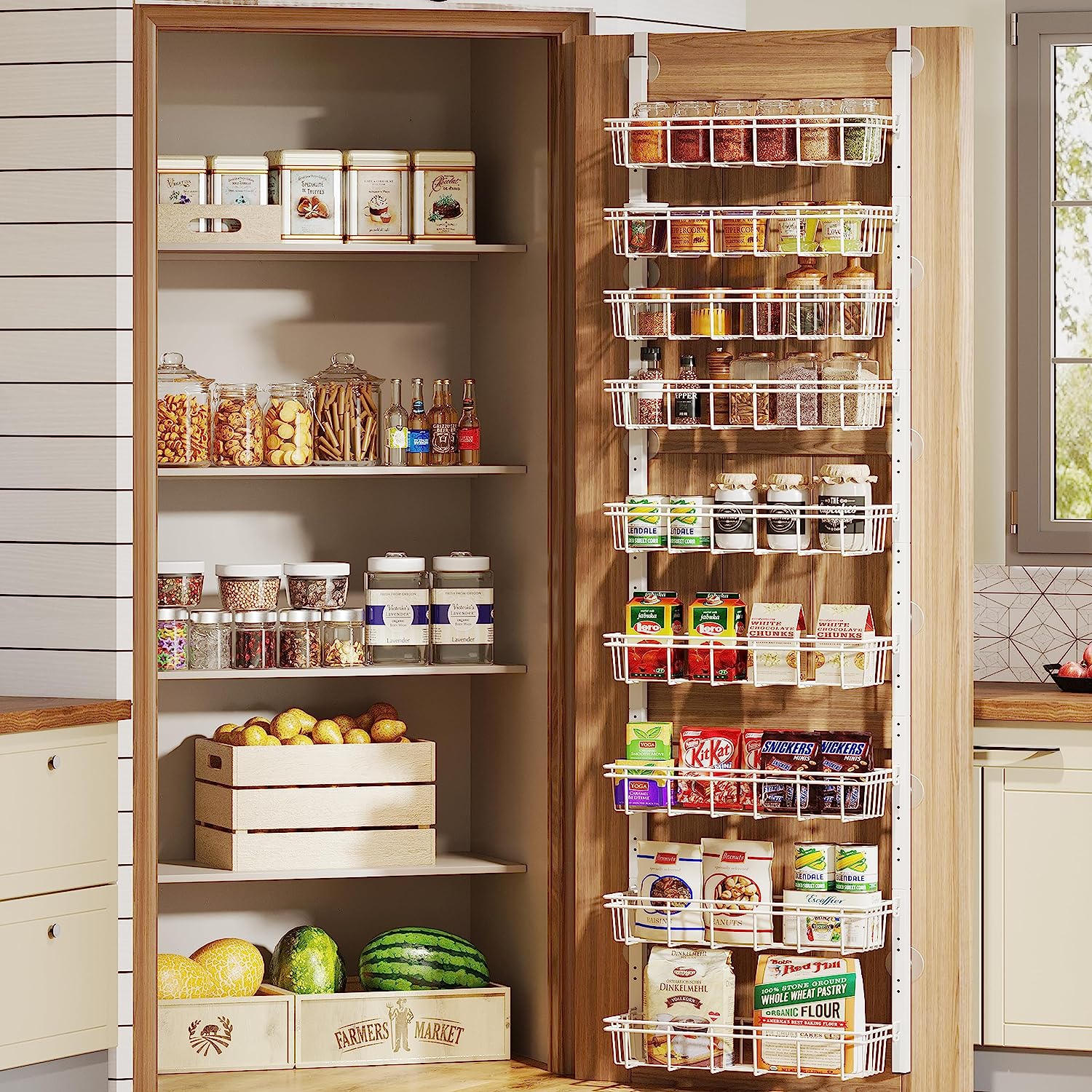

Articles
How To Stock Pantry
Modified: April 22, 2024
Learn how to efficiently stock and organize your pantry storage with these helpful tips and tricks. Maximize your space and never run out of essentials again!
(Many of the links in this article redirect to a specific reviewed product. Your purchase of these products through affiliate links helps to generate commission for Storables.com, at no extra cost. Learn more)
Introduction
Welcome to the wonderful world of a well-stocked pantry! Whether you are a busy professional, a stay-at-home parent, or someone who simply loves to cook, having a pantry filled with essential ingredients is a game-changer. Not only does it save you time and money, but it also allows you to whip up delicious meals with ease.
A well-stocked pantry is like a treasure trove of culinary possibilities. It’s a place where you can find the ingredients to make anything from a comforting bowl of soup to a gourmet feast. And the best part? You can customize your pantry according to your preferences, dietary restrictions, and cooking style.
In this article, we will explore the benefits of having a well-stocked pantry and guide you through the essential staples, canned goods, dry goods, spices and seasonings, baking supplies, oils, vinegars, condiments, snacks and treats, and beverages to include. We will also provide tips on organizing your pantry and maintaining a stocked supply of ingredients.
With a well-stocked pantry, you’ll never have to worry about running out of key ingredients or making last-minute trips to the grocery store. Plus, it’s a fantastic way to boost your creativity in the kitchen and experiment with new recipes. So, let’s dive in and discover how to create a pantry that will make your cooking adventures a breeze!
Key Takeaways:
- A well-stocked pantry offers convenience, flexibility in meal planning, cost savings, and healthy eating options. It provides the foundation for creating delicious meals and ensures you’re always prepared, whether for everyday cooking or unexpected situations.
- Organizing and maintaining a stocked pantry involves categorizing, using storage containers, and regularly checking expiry dates. Embracing seasonality, trying new ingredients, and enjoying the process of cooking are essential for a well-maintained and inspiring pantry.
Read more: How To Store Stock
Benefits of a Well-Stocked Pantry
Having a well-stocked pantry can transform your cooking experience in numerous ways. Here are the key benefits that come with a fully stocked supply of ingredients:
- Convenience: One of the biggest advantages of a well-stocked pantry is the convenience it offers. You always have a variety of ingredients on hand, allowing you to prepare meals quickly and effortlessly. No more rushing to the store or improvising with substitutes!
- Flexibility in Meal Planning: With a stocked pantry, you have the flexibility to create diverse meals without being limited by what’s available at the store. You can easily adapt recipes, substitute ingredients, and experiment with different flavor combinations, making meal planning much more enjoyable.
- Cost-Effective: Buying ingredients in bulk or when they are on sale and storing them in your pantry can save you a significant amount of money in the long run. You can take advantage of bulk discounts and avoid impulse purchases at higher prices.
- Emergency Preparedness: Natural disasters, power outages, or unexpected situations can disrupt regular grocery shopping. A well-stocked pantry ensures that you have a supply of non-perishable food items that can sustain you during such emergencies.
- Healthy Eating: When your pantry is filled with nutritious staples, it becomes easier to maintain a healthy diet. You can stock up on whole grains, legumes, canned fruits and vegetables, and other wholesome ingredients that form the foundation of a balanced meal.
- Time-Saving: Ever find yourself scrambling to put a meal together at the last minute? A fully stocked pantry saves you time by eliminating the need for frequent grocery store visits. It allows you to save precious minutes during busy weekdays or when unexpected guests drop by.
These are just a few of the many benefits that come with maintaining a well-stocked pantry. Not only does it make your daily cooking routine more efficient, but it also opens up a world of culinary possibilities. So, let’s move on to discovering the essential staples you should have in your pantry.
Essential Staples
A well-stocked pantry starts with a foundation of essential staples. These are the basic ingredients that form the backbone of many recipes and allow you to create a wide range of dishes. Here are some essential staples to include in your pantry:
- Flour: All-purpose flour is a versatile ingredient that can be used for baking, making homemade pasta or bread, and thickening sauces. Consider having whole wheat or gluten-free flour options as well, depending on your dietary preferences.
- Sugar: White sugar, brown sugar, and powdered sugar are pantry essentials for baking and sweetening beverages. Choose different varieties based on your needs, such as granulated cane sugar or natural sweeteners like honey or maple syrup.
- Grains: Stock up on a variety of grains like rice, quinoa, oats, and pasta. These are versatile ingredients that can be used as a base for many dishes, from stir-fries to salads to hearty grain bowls.
- Beans and Legumes: Canned or dried beans and legumes are excellent sources of plant-based protein and essential nutrients. Keep a selection of kidney beans, chickpeas, lentils, and black beans, which can be used in soups, stews, salads, and homemade veggie burgers.
- Canned Tomatoes: Tomatoes are a pantry staple that can be used as a base for sauces, soups, and stews. Stock up on diced tomatoes, tomato sauce, and tomato paste to have a variety of options available.
- Stock or Broth: Chicken, beef, or vegetable stock/broth is a versatile ingredient that adds depth of flavor to many recipes. It serves as a foundation for soups, stews, risottos, and sauces.
- Onions and Garlic: These aromatic vegetables add essential flavor to countless dishes. Keep a supply of onions and garlic in your pantry to use as a base for sautéing or to add depth of flavor to sauces, marinades, and dressings.
- Spices and Herbs: A well-stocked spice rack is crucial for adding depth, flavor, and complexity to your dishes. Some essential spices to have on hand include salt, pepper, cumin, paprika, oregano, basil, thyme, and cinnamon.
These essential pantry staples will ensure that you have the core ingredients needed to create a wide variety of meals. Combined with other ingredients, these staples form the building blocks for delicious and creative dishes. Now that you have the foundation, let’s explore the world of canned goods to add to your pantry.
Canned Goods
Canned goods are an essential component of a well-stocked pantry. They provide convenience, versatility, and a long shelf life. Here are some types of canned goods to consider including in your pantry:
- Canned Vegetables: Stock up on a variety of canned vegetables like corn, peas, green beans, and diced tomatoes. These vegetables are pre-cooked and retain their nutritional value, making them a convenient and nutritious addition to soups, stews, casseroles, and side dishes.
- Canned Fruits: Canned fruits, such as pineapple chunks, peaches, and mandarin oranges, are a great addition to desserts, salads, and even savory dishes like stir-fries. They add a burst of flavor and sweetness to your recipes without the need for fresh fruit.
- Canned Beans: Canned beans, such as kidney beans, black beans, and chickpeas, are a versatile ingredient that can be used in various dishes. They are packed with protein and fiber and can be added to soups, stews, salads, and even mashed for spreads and dips.
- Canned Fish: Tuna, salmon, and sardines packed in cans are excellent sources of protein and omega-3 fatty acids. They can be used to make sandwiches, salads, pasta dishes, or even as toppings for pizzas.
- Canned Soups: Having a few cans of soup in your pantry can be a lifesaver on busy days or when you need a quick meal. Opt for a variety of flavors like tomato, chicken noodle, vegetable, or cream-based soups to suit your preferences.
- Canned Sauces: Canned pasta sauces, curry sauces, and salsa can be used as a base for quick and flavorful meals. They save you time from having to make sauces from scratch and can be customized with additional ingredients and seasonings.
- Canned Broths: Chicken, beef, or vegetable broths in cans are ideal for making soups, stews, and flavorful rice or quinoa dishes. They add depth of flavor and can be used in place of homemade stock in many recipes.
Canned goods are incredibly versatile and come in handy when fresh ingredients are not readily available. They provide a convenient way to add flavor, texture, and nutrients to your meals. Just make sure to check the labels and choose options with no added preservatives or excessive sodium. Now that we’ve explored canned goods, let’s move on to dry goods, another essential category for a well-stocked pantry.
Dry Goods
Dry goods are pantry staples that have a longer shelf life and are essential for creating a variety of delicious meals. They are versatile, economical, and can be stored for an extended period. Here are some dry goods to consider stocking up on:
- Rice: Rice is a staple in many cuisines and can be used as a side dish, in stir-fries, or as a base for hearty bowls. Choose different varieties like white rice, brown rice, basmati rice, or wild rice to cater to your preferences.
- Pasta: Pasta comes in numerous shapes and sizes, making it a versatile ingredient for many classic dishes. Keep a variety of pasta types in your pantry, such as spaghetti, penne, fusilli, or macaroni, to suit different recipes.
- Cereal and Grains: Stock up on breakfast cereal, oats, and other grains like quinoa, barley, or couscous. These options provide a quick and nutritious breakfast or can be used for making porridge, salads, or pilafs.
- Bread and Tortillas: Having bread or tortillas in your pantry is useful for making sandwiches, wraps, or to accompany soups and stews. Opt for whole wheat or multigrain options for added nutritional value.
- Nuts and Seeds: Nuts and seeds are pantry essentials that add crunch, flavor, and nutrition to your meals. Almonds, walnuts, chia seeds, flaxseeds, or sunflower seeds can be added to salads, baked goods, or enjoyed as a healthy snack.
- Dried Herbs and Spices: Dried herbs and spices are a must-have for flavoring your dishes. Some common options include oregano, basil, thyme, paprika, chili powder, cumin, and cinnamon. They add depth and complexity to your meals with just a pinch.
- Flour Tortillas: Flour tortillas are incredibly versatile and can be used to make wraps, quesadillas, or even pizzas. Keep a package of tortillas in your pantry to quickly assemble a satisfying meal.
- Baking Goods: Stock up on baking essentials like baking powder, baking soda, vanilla extract, cocoa powder, and chocolate chips. These ingredients allow you to bake a variety of delicious treats like cookies, cakes, and muffins.
Dry goods form the backbone of many meals and provide a solid base for your pantry. They are versatile and can be used in a variety of dishes, ranging from simple weeknight dinners to elaborate recipes. With these essential dry goods on hand, you’ll always have the foundation for a satisfying and delicious meal. Now, let’s explore the next category: spices and seasonings.
Spices and Seasonings
Spices and seasonings are the secret weapons in the culinary world, adding flavor, aroma, and depth to your dishes. They can transform a plain meal into something extraordinary. Here are some essential spices and seasonings to include in your pantry:
- Salt and Pepper: Salt and pepper are the basic building blocks of flavor. They enhance the taste of almost any dish and are essential for seasoning meat, vegetables, soups, and sauces.
- Garlic Powder and Onion Powder: These powders are convenient alternatives to using fresh garlic and onion. They add depth and flavor to a variety of dishes, such as marinades, soups, stews, or roasted vegetables.
- Paprika: Paprika comes in various types, including sweet, smoked, and hot. It adds vibrant color and a mild, smoky flavor to dishes like stews, roasted meats, or even deviled eggs.
- Cumin: Cumin is a versatile spice commonly used in Mexican, Indian, and Middle Eastern cuisines. It adds a warm, earthy flavor to chili, curries, rice dishes, and roasted vegetables.
- Oregano: This herb is a must-have for Mediterranean, Italian, and Mexican dishes. It pairs well with tomatoes, pasta sauces, pizzas, and grilled meats.
- Basil: Basil is a fragrant herb that adds a fresh and slightly sweet flavor to sauces, soups, pasta dishes, and salads. It is a staple in Italian cuisine.
- Thyme: Thyme is an aromatic herb that pairs well with roasted meats, soups, and stews. Its earthy flavor adds depth to dishes and is often used in Mediterranean and French cuisines.
- Cinnamon: Cinnamon is a warm and comforting spice used in both sweet and savory recipes. It adds a delightful aroma and flavor to baked goods, oatmeal, curries, and Moroccan dishes.
These are just a few examples of the vast array of spices and seasonings available. Experimenting with different spices can elevate your cooking and bring out unique flavors. Remember to store spices in a cool, dry place to maintain their freshness. Now that we’ve explored spices and seasonings, let’s move on to baking supplies.
Baking Supplies
Baking supplies are essential for those with a sweet tooth or anyone who enjoys the art of baking. These ingredients are versatile and can be used to create a wide range of delicious treats. Here are some must-have baking supplies to keep in your pantry:
- All-Purpose Flour: All-purpose flour is a staple in baking and is used as the base for most recipes, including cakes, cookies, and bread. It provides structure and texture to baked goods.
- Baking Powder and Baking Soda: These leavening agents help baked goods rise and become light and fluffy. Baking powder is used when a recipe calls for an immediate rise, while baking soda requires an acidic ingredient to activate it.
- Sugar: Granulated sugar is the most common type of sugar used in baking. It adds sweetness and helps with browning. Other types of sugar, like brown sugar or powdered sugar, are also commonly used for their unique properties.
- Butter: Butter adds richness and flavor to baked goods. It is used for creaming with sugar to create a light and fluffy texture. Make sure to have both unsalted and salted butter in your pantry, depending on the recipe.
- Eggs: Eggs provide structure, moisture, and richness to baked goods. They act as a binder and help with leavening. Always keep a stock of eggs in your pantry for your baking adventures.
- Vanilla Extract: Vanilla extract is a popular flavoring used in a wide range of sweet baked goods, from cookies and cakes to pastries and custards. It adds a warm and inviting aroma and enhances the overall flavor.
- Baking Chocolate: Chocolate is a key ingredient in countless desserts. Whether it’s for making chocolate chip cookies, brownies, or a decadent cake, having baking chocolate or chocolate chips in your pantry is a must.
- Baking Nuts and Fruits: Nuts and dried fruits such as almonds, walnuts, raisins, or dried cranberries are often used in baking for added texture and flavor. They can be sprinkled on top of cakes, folded into cookie dough, or used as a filling.
- Baking Extracts and Spices: Aside from vanilla extract, other baking extracts like almond, lemon, or orange can add unique flavors to your creations. Essential spices like cinnamon, nutmeg, or ginger are also commonly used in baking.
With these baking supplies in your pantry, you’ll be ready to create a variety of delicious baked goods. Whether you’re a seasoned baker or a beginner, the joy of bringing a freshly baked treat out of the oven is truly special. Now, let’s move on to another essential category: oils, vinegars, and condiments.
When stocking your pantry, prioritize non-perishable items like canned goods, rice, pasta, and dried beans. Also, consider adding spices, oils, and condiments for flavor. Keep a list of pantry staples to help with meal planning.
Oils, Vinegars, and Condiments
Oils, vinegars, and condiments are the flavor enhancers that add a unique touch to your dishes. They provide a balance of acidity, richness, and tanginess, enhancing the overall taste of your meals. Here are some essential oils, vinegars, and condiments to have in your pantry:
- Olive Oil: Olive oil is a versatile and heart-healthy oil that can be used for cooking, dressing salads, and drizzling over dishes. Opt for extra virgin olive oil for its robust flavor and nutritional benefits.
- Vegetable or Canola Oil: These neutral-flavored oils are great for baking, frying, and sautéing. They have a high smoke point, making them suitable for high-heat cooking methods.
- Balsamic Vinegar: Balsamic vinegar adds a rich, tangy flavor to dressings, marinades, and glazes. It pairs well with salads, roasted vegetables, and even strawberries for a unique twist.
- Red Wine Vinegar: Red wine vinegar adds acidity and complexity to dressings, marinades, and sauces. It works well with roasted vegetables, braised meats, or in vinaigrettes.
- Soy Sauce: Soy sauce is a staple in Asian cuisine and adds umami flavor to stir-fries, marinades, and dipping sauces. Opt for low-sodium soy sauce if you prefer to control the amount of salt in your dishes.
- Hot Sauce: Hot sauce adds heat and flavor to various dishes. Whether you enjoy a mild sauce or prefer a fiery kick, having hot sauce in your pantry allows you to add a spicy twist to your meals.
- Mustard: Mustard is a versatile condiment that can be used as a spread for sandwiches, a dip for pretzels, or added to dressings and marinades for a tangy kick.
- Mayonnaise: Mayonnaise adds richness and creaminess to sandwiches, salads, and dips. It serves as a base for many sauces and spreads.
- Ketchup: Ketchup is a classic condiment that pairs well with burgers, fries, and sandwiches. It adds a tangy-sweet flavor to your favorite comfort foods.
- Peanut Butter: Peanut butter is not only a tasty spread but a versatile ingredient that can be used in baking, sauces, or dressings. Choose between creamy or crunchy based on your preference.
These oils, vinegars, and condiments are essential for adding depth and enhancing the flavors in your dishes. They bring a variety of tastes to your pantry, making it easy to create vibrant and well-balanced meals. Now that we’ve explored oils, vinegars, and condiments, let’s move on to another important category: snacks and treats.
Snacks and Treats
Having a selection of snacks and treats in your pantry is essential for satisfying cravings and providing quick, convenient options for on-the-go snacking. Here are some delicious snacks and treats to keep on hand:
- Nuts and Seeds: Nuts and seeds like almonds, cashews, peanuts, sunflower seeds, or pumpkin seeds are nutritious snacks packed with protein, healthy fats, and fiber. They can be enjoyed on their own or added to trail mixes for a satisfying crunch.
- Dried Fruit: Dried fruits like raisins, apricots, cranberries, or mango slices offer a sweet and chewy snack that is perfect for satisfying sweet cravings. They provide natural sweetness and are a great source of fiber and antioxidants.
- Granola Bars: Stock up on a variety of granola bars made with wholesome ingredients like oats, nuts, seeds, and dried fruit. They offer a convenient and portable snack option, whether you’re heading to work, school, or outdoor activities.
- Popcorn: Popcorn is a light and crunchy snack that can be enjoyed plain or flavored with various seasonings like butter, caramel, or cheese. Look for air-popped or lightly salted options for a healthier choice.
- Crackers: Keep a variety of crackers on hand for a quick and easy snack. Whether you prefer whole wheat, multigrain, or flavored options, they can be enjoyed with cheese, dips, spreads, or on their own.
- Chocolate and Sweets: Indulge your sweet tooth with a selection of chocolates and sweets. Whether it’s dark chocolate, milk chocolate, or even a special treat like gourmet truffles or chocolate-covered nuts, these treats are perfect for occasional indulgence.
- Rice Cakes: Rice cakes are a versatile and low-calorie snack that can be topped with various spreads like peanut butter, hummus, or avocado for a satisfying crunch.
- Crisps and Pretzels: Crisps and pretzels are salty and crunchy options that can be enjoyed on their own or with dips like salsa, guacamole, or hummus.
- Yogurt: Stock your pantry with individual packs or larger containers of yogurt. It’s a versatile snack that can be enjoyed on its own, blended into smoothies, or topped with granola and fruit.
These snacks and treats are perfect for satisfying cravings, providing energy, and adding variety to your pantry. Remember to choose options that align with your dietary preferences and nutritional needs. Now that we have explored snacks and treats, let’s move on to the final category: beverages.
Read more: How To Store Homemade Stock
Beverages
A well-stocked pantry should include a selection of beverages to keep you hydrated, refreshed, and ready to enjoy a variety of drinks. Here are some beverages to consider having on hand:
- Water: Water is essential for staying hydrated and is the most important beverage to have in your pantry. Keep bottles or a water filtration system to ensure you always have clean drinking water available.
- Tea: Stock up on a variety of tea bags or loose leaf teas for a soothing and comforting drink. Whether you prefer black tea, herbal tea, green tea, or chamomile tea, having an assortment allows you to tailor your tea to your mood and preferences.
- Coffee: If you’re a coffee lover, consider having ground coffee or coffee beans in your pantry. This allows you to brew a fresh cup of coffee whenever you need a pick-me-up or want to savor a quiet moment.
- Juices: Keep a selection of your favorite juices, such as orange juice, apple juice, or grapefruit juice, for a refreshing and vitamin-packed beverage. Look for options without added sugars or opt to freshly squeeze your own juice for a healthier choice.
- Soda and Carbonated Drinks: If you enjoy carbonated beverages, having a few cans or bottles of soda or sparkling water can provide a fizzy and flavorful treat. Look for healthier options like zero-sugar or naturally sweetened drinks.
- Milk and Non-Dairy Alternatives: Keep your preferred milk or non-dairy alternatives in your pantry for use in coffee, tea, smoothies, or any recipe that calls for milk. Options like almond milk, oat milk, or soy milk offer alternatives for those with dietary restrictions or preferences.
- Energy Drinks: Energy drinks can provide a quick boost of energy when needed. However, it’s important to consume them in moderation and be aware of their caffeine and sugar content.
- Infused Water: Add a flavorful twist to your hydration routine by keeping ingredients for infused water. Fresh fruits, herbs, and even cucumbers can infuse water with refreshing flavors, making it a healthier and tastier alternative to sugary drinks.
Having a variety of beverages in your pantry ensures that you have options for different occasions, whether it’s a refreshing glass of juice, a comforting cup of tea, or a revitalizing sip of water. Consider your preferences and needs when selecting the beverages to include in your pantry. Now that we have covered beverages, let’s move on to organizing your pantry to ensure everything is easily accessible.
Organizing Your Pantry
Keeping your pantry organized is key to maximizing its efficiency and ensuring that ingredients are easily accessible when you need them. Here are some tips to help you keep your pantry organized:
- Clear Out and Clean: Start by clearing out your pantry and removing any expired or unused items. Wipe down the shelves and clean any spills or sticky residue.
- Categorize and Group: Group similar items together to make them easier to find. Create categories like grains, canned goods, baking supplies, snacks, beverages, etc. Use labeled containers or bins to store smaller items within each category.
- Use Storage Containers: Invest in clear, airtight containers for storing dry goods like rice, pasta, flour, and cereals. This helps keep them fresh and allows you to see when supplies are running low.
- Utilize Shelf Risers and Organizers: Make the most of your pantry space by using shelf risers or organizers for canned goods and spices. This creates vertical storage and prevents items from getting lost behind each other.
- Label and Date Items: Label containers and jars to easily identify the contents. Also, consider dating items to ensure that older products are used first to prevent waste.
- Arrange According to Frequency of Use: Place frequently used items at eye level for easy access. Reserve lower shelves for heavier items and store less frequently used items higher up or towards the back of the pantry.
- Create a Snack Section: Designate a specific area for snacks and treats, making it easier for you and your family to satisfy cravings without rummaging through other pantry items.
- Keep a Shopping List: Maintain an ongoing shopping list posted in your pantry or on your phone. Whenever you run out of an ingredient, immediately add it to the list to ensure you replenish supplies on your next grocery run.
- Regularly Check and Reorganize: Set aside time every few months to go through your pantry, discard expired items, and reorganize as needed. This helps keep your pantry well-maintained and prevents clutter from building up.
By following these organization tips, you’ll create a well-organized pantry that allows you to quickly find ingredients, prevent waste, and make the most of your cooking experience. Now that your pantry is in order, let’s move on to some tips for maintaining a stocked pantry for the long term.
Tips for Maintaining a Stocked Pantry
Maintaining a well-stocked pantry involves more than just filling it with essentials. It requires careful planning, organization, and regular maintenance. Here are some tips to help you keep your pantry stocked and organized:
- Create a Meal Plan: Plan your meals for the week in advance. This allows you to make a shopping list and ensure you have all the necessary ingredients on hand.
- Stock Up on Sale Items: Keep an eye out for sales and discounts on pantry staples. Purchase in bulk when items you regularly use are on sale to save money and ensure a steady supply.
- Rotate and Check Expiry Dates: Regularly check the expiry dates of the items in your pantry. Arrange them in a way that encourages rotation, placing newer items behind older ones. This prevents food from going to waste.
- Restock After Use: Make it a habit to restock items in your pantry as soon as they are used up. This ensures that you always have a ready supply of ingredients and avoids last-minute trips to the grocery store.
- Keep a Running Shopping List: Maintain an ongoing shopping list and add items to it as they run out. When it’s time for grocery shopping, you’ll have a comprehensive list of pantry items to restock.
- Embrace Seasonality: Incorporate seasonal produce and ingredients into your pantry. Not only does it add variety to your meals but it can also be more cost-effective and environmentally friendly.
- Try New Ingredients: Experiment with new ingredients and flavors to keep your pantry exciting. Discovering new spices, grains, or condiments can inspire you to try different recipes and expand your culinary repertoire.
- Donate and Give Back: Regularly assess your pantry and identify items that you won’t use or are close to expiry. Consider donating them to food drives or shelters to help those in need.
- Take Inventory Regularly: Set aside time every few weeks to take inventory of your pantry. Assess what needs to be restocked, what needs to be used up, and what should be discarded. This helps maintain a well-organized and efficient pantry.
- Enjoy the Process: Lastly, enjoy the process of maintaining a stocked pantry. Explore new recipes, enjoy the satisfaction of creating meals from scratch, and savor the delights that your pantry has to offer.
By following these tips, you’ll be able to maintain a well-stocked and organized pantry that supports your culinary endeavors and makes meal preparation a breeze. With a little planning, organization, and attention to detail, your pantry will serve as a reliable source of inspiration and nourishment. Happy cooking!
Remember to regularly check the validity of HTML encoding before publishing or sharing your content.
Conclusion
Congratulations! You now have the knowledge and insights to create and maintain a well-stocked pantry that will elevate your cooking experience to new heights. By following the tips and recommendations provided in this article, you can ensure that your pantry is filled with essential staples, canned goods, dry goods, spices, baking supplies, oils, vinegars, condiments, snacks, treats, and beverages.
A well-stocked pantry offers numerous benefits, including convenience, flexibility in meal planning, cost savings, emergency preparedness, healthy eating options, and time-saving benefits. It provides you with the foundation to create delicious and nutritious meals from scratch and allows you to experiment with different recipes and flavors.
Remember to keep your pantry organized by categorizing and grouping similar items, using storage containers, and labeling everything correctly. With an organized pantry, you can easily find what you need and avoid wasting ingredients. Regularly inventory your pantry, restock items after use, and take note of expiry dates to ensure that your pantry remains well-maintained.
Finally, embrace the joy of cooking and exploring new ingredients. Don’t be afraid to try new recipes and experiment with new flavors. Your well-stocked pantry will provide a solid foundation for culinary creativity and enable you to prepare delicious meals for yourself, your family, and your friends.
Enjoy the process of maintaining a stocked pantry and the satisfaction it brings. Your pantry will be a treasure trove of culinary possibilities, allowing you to prepare and enjoy meals that nourish both body and soul. So, roll up your sleeves, stock your pantry, and let your culinary adventures begin!
Remember to regularly check the validity of HTML encoding before publishing or sharing your content.
Frequently Asked Questions about How To Stock Pantry
Was this page helpful?
At Storables.com, we guarantee accurate and reliable information. Our content, validated by Expert Board Contributors, is crafted following stringent Editorial Policies. We're committed to providing you with well-researched, expert-backed insights for all your informational needs.


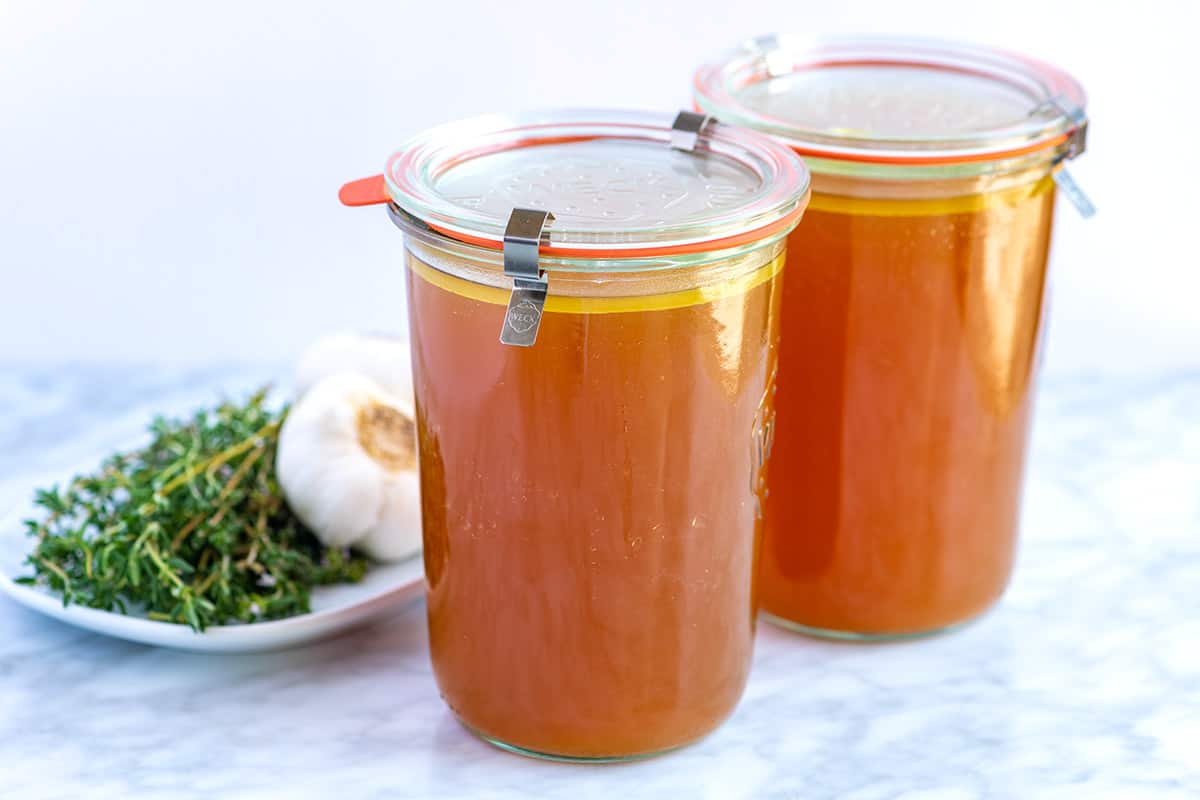
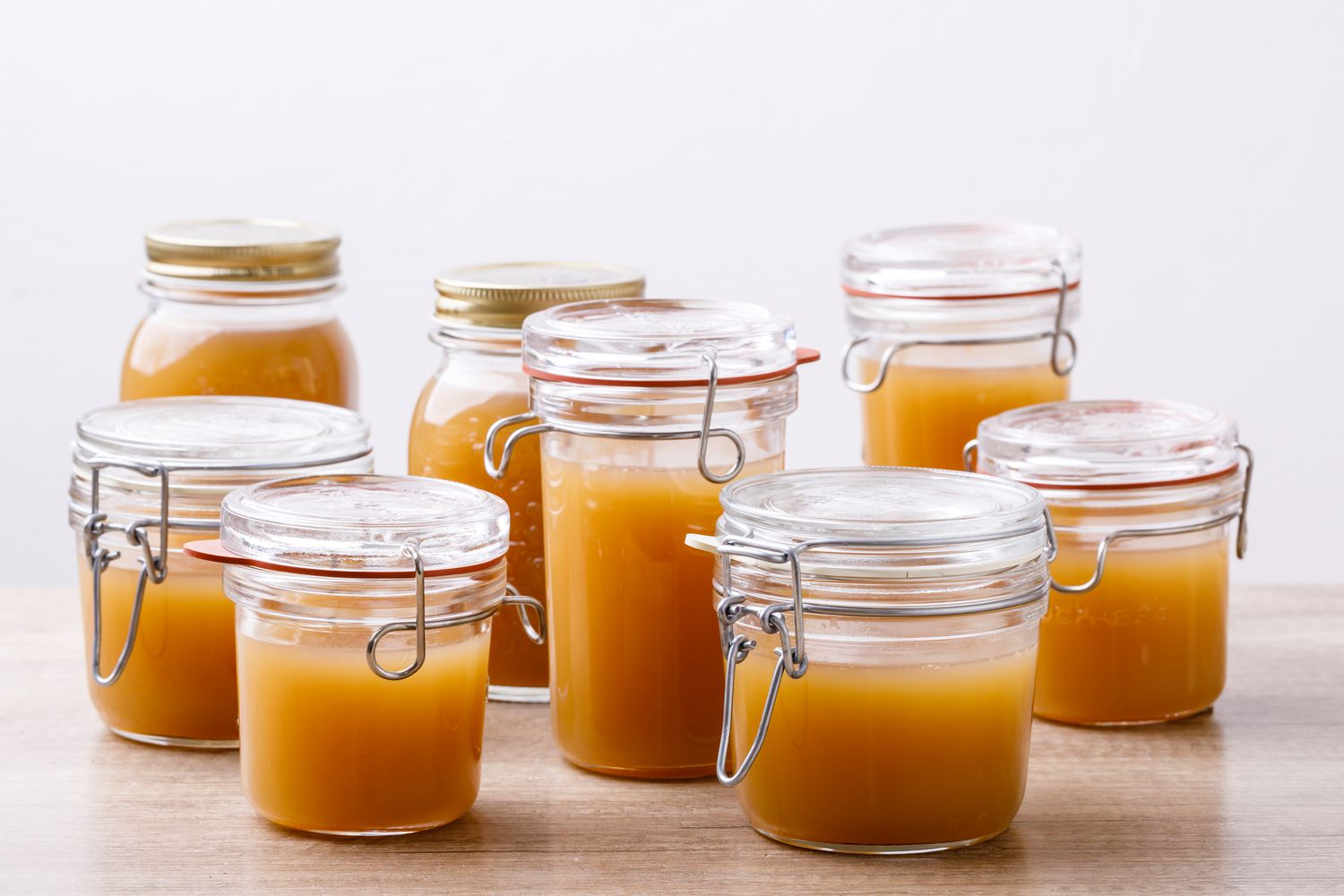



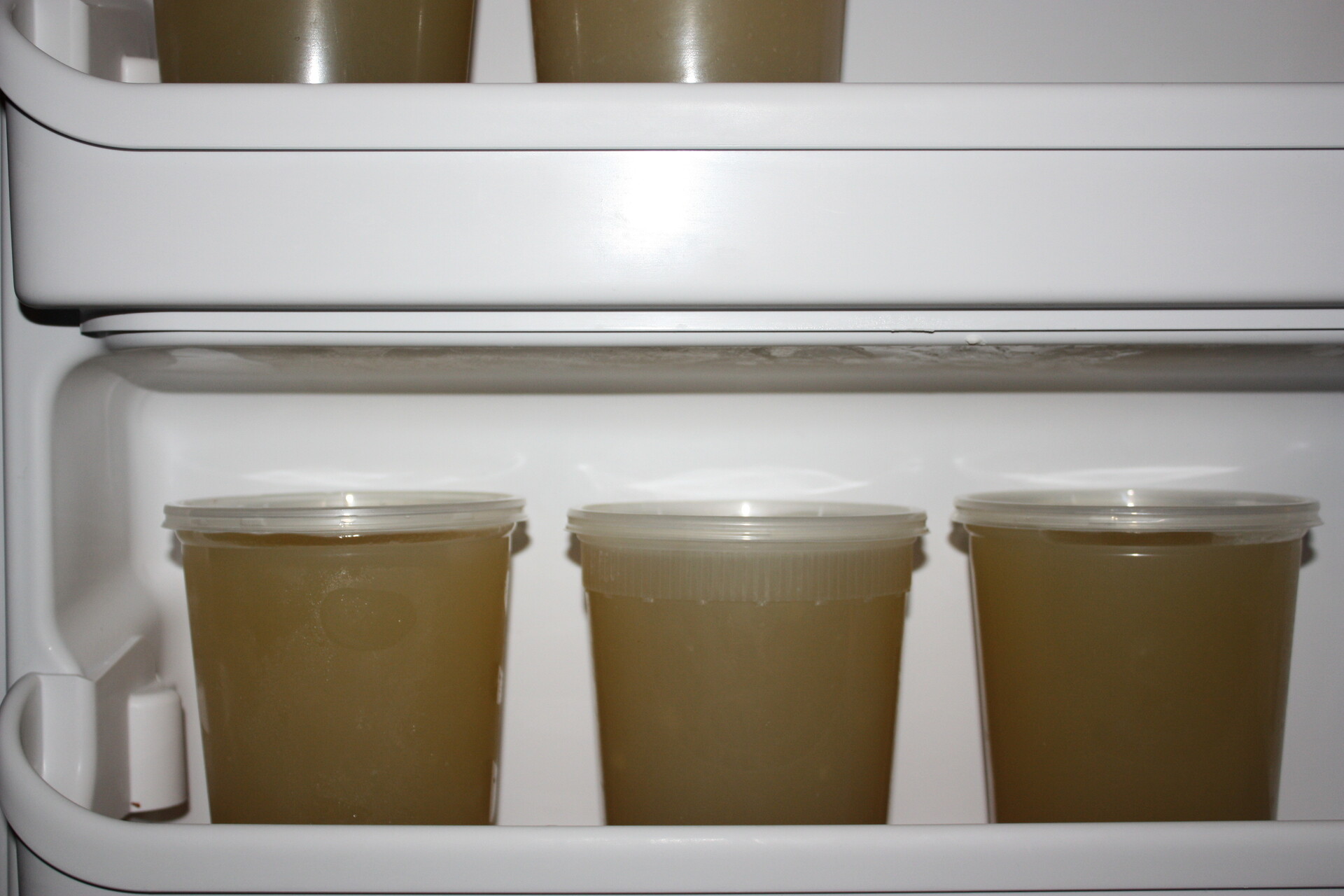
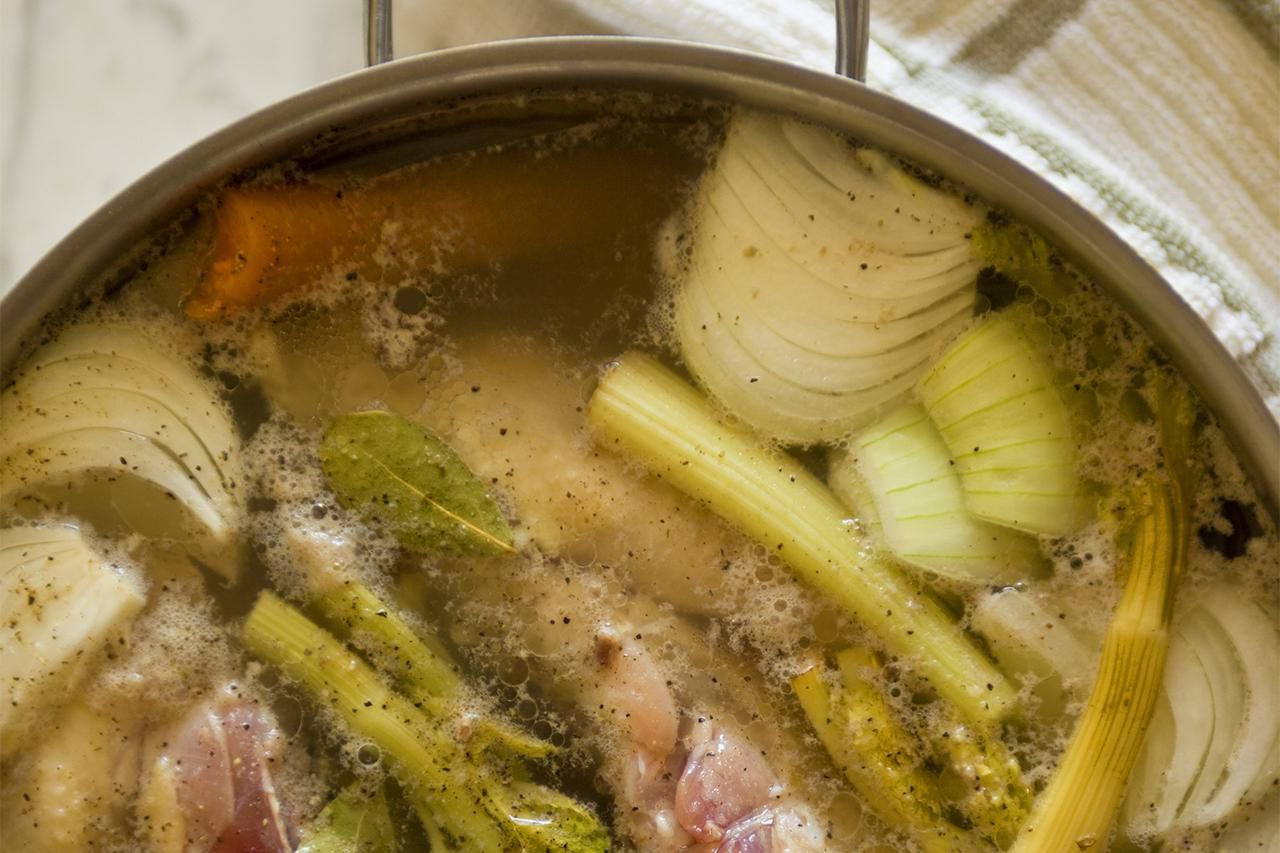

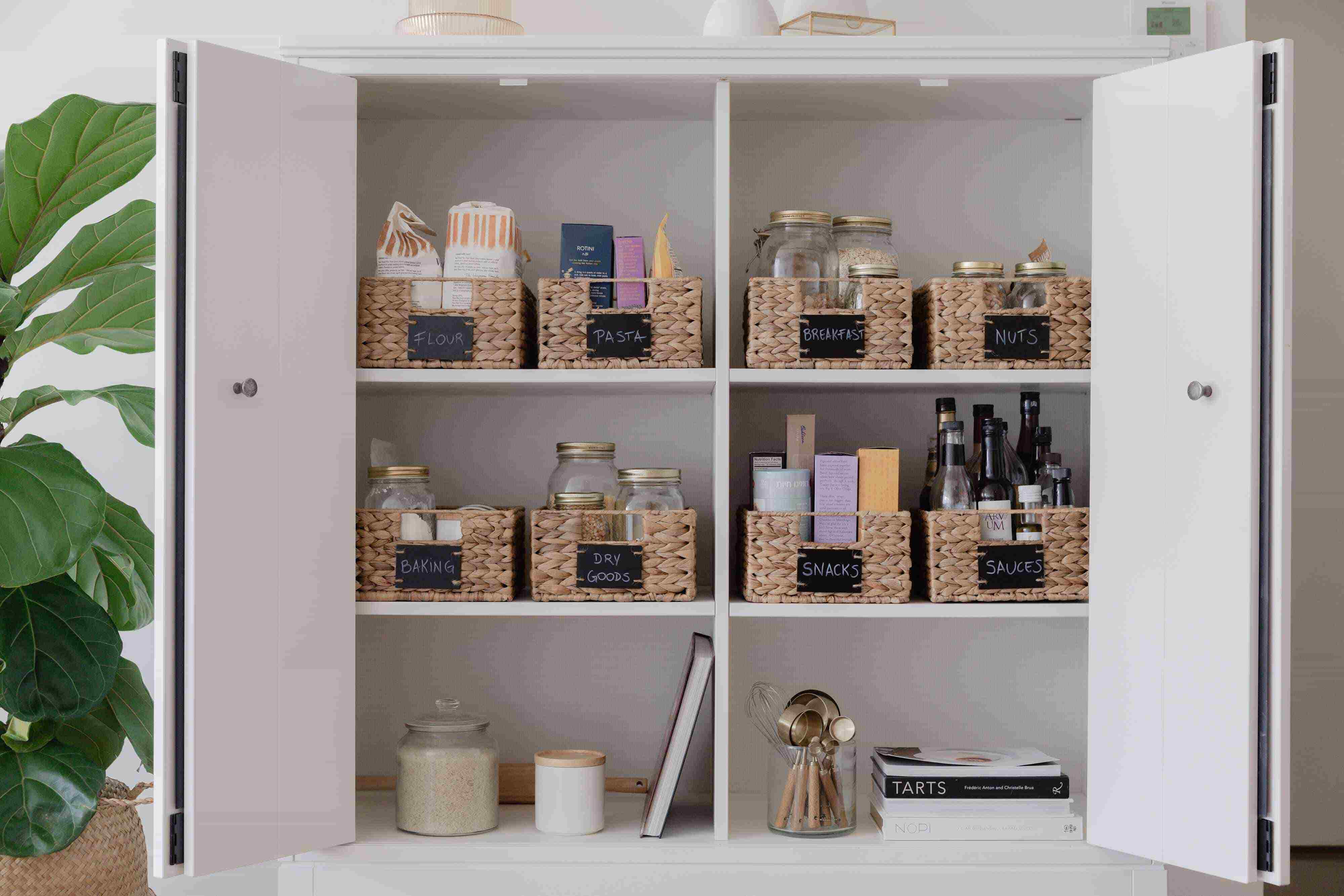
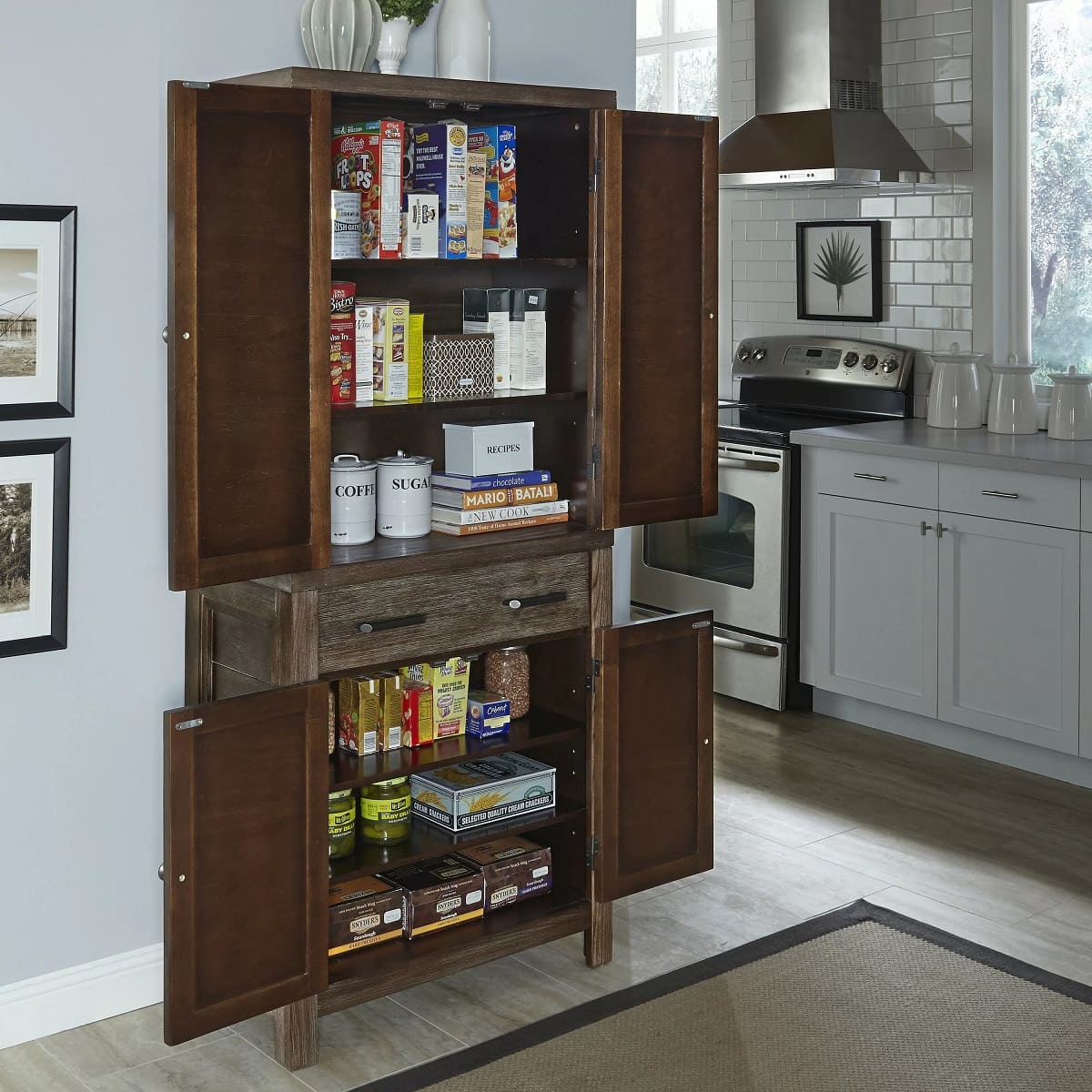
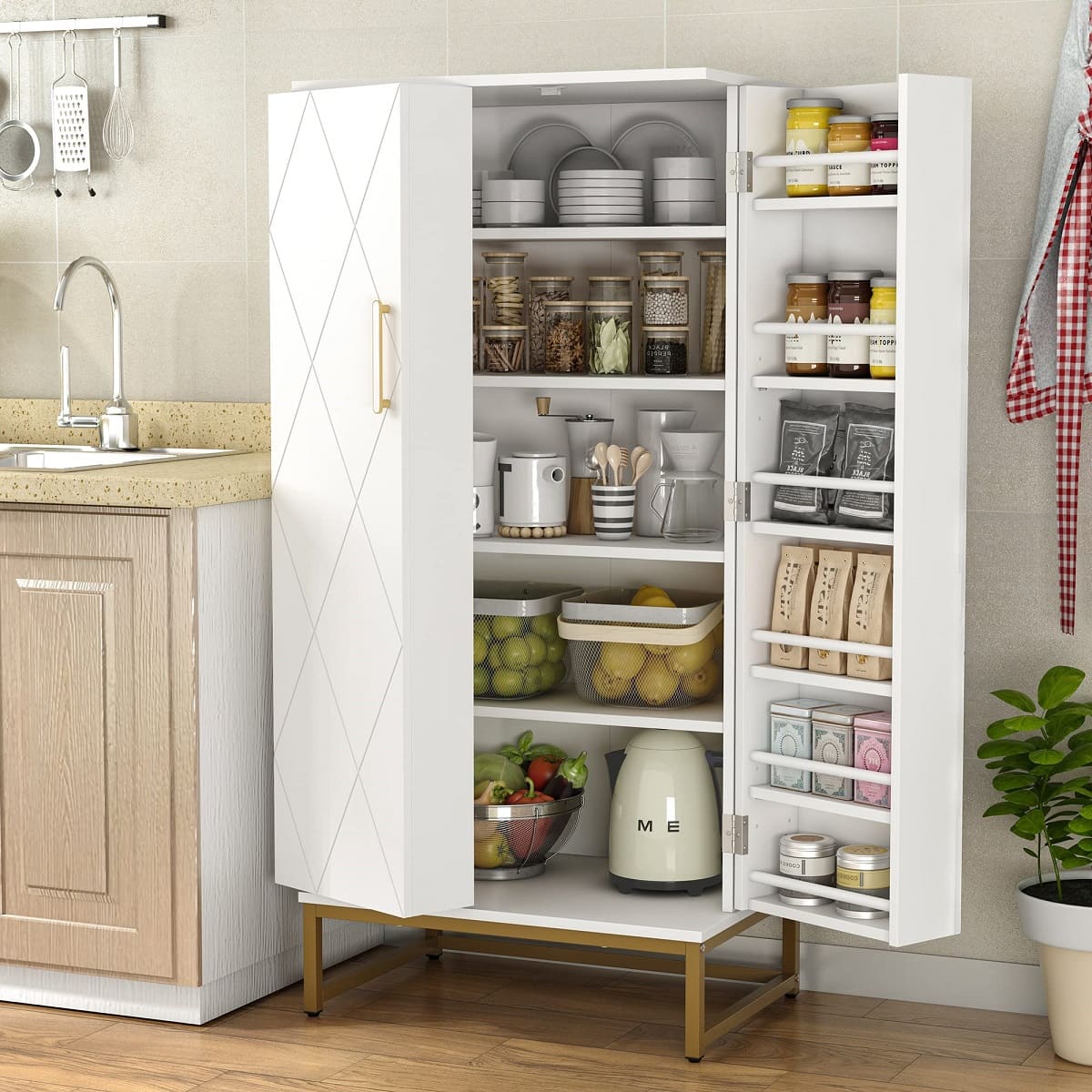

0 thoughts on “How To Stock Pantry”